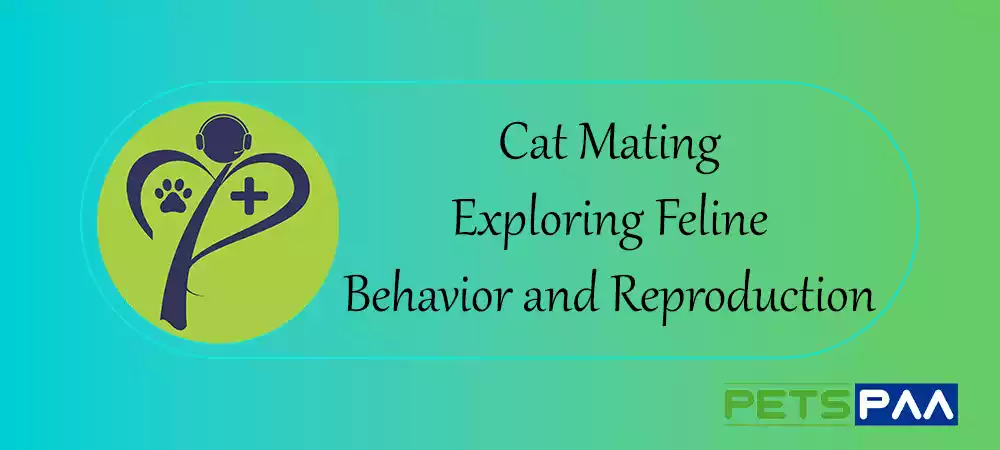[rank_math_breadcrumb]
As we explore the fascinating world of feline behavior and reproduction, we can’t help but notice one of the most important components of a cat’s life: mating. With their intriguing habits and intricate instincts, cats perform a fascinating ballet that ensures the survival of their species.
We’ll go deep into the fascinating domain of cat mating in this investigation, revealing the inherent impulses that drive this process.
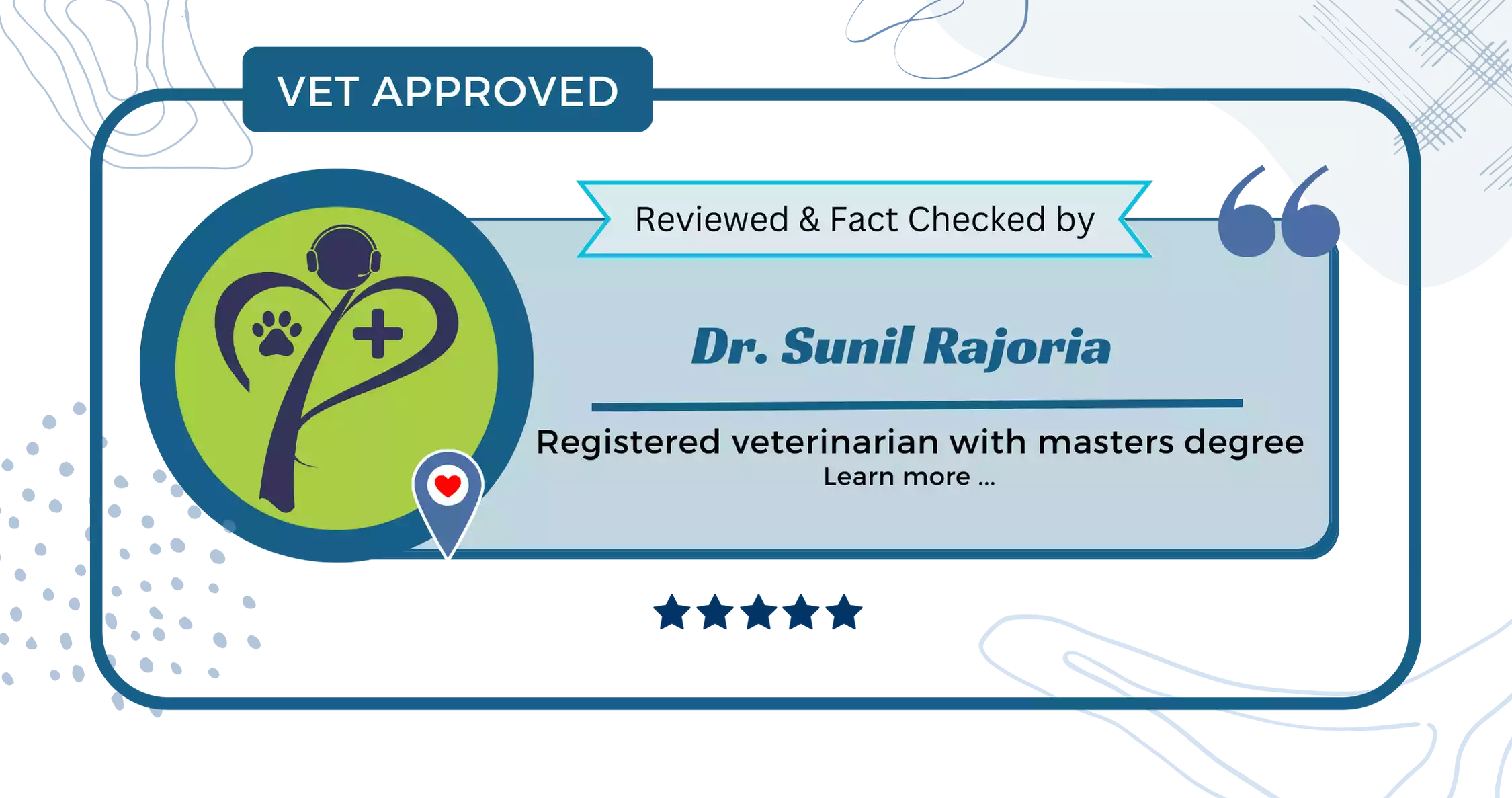
Introduction
When it comes to the feline world, cat mating is critical to the survival of the species. The complicated rituals and behaviors connected with mating are ubiquitous, from the domesticated house cat to their wild counterparts.
As we learn more about the subject, we are attracted to a universe where instincts and biological cycles regulate activities that result in the development of new life.
Understanding the Reproductive Cycle
Estrus Cycle: The “In Heat” Phenomenon
The estrus cycle, sometimes known as a cat being “in heat,” is an important part of the feline reproductive cycle. Female cats suffer a rise in hormonal activity during this time, marking their readiness for mating.
This intriguing stage is characterized by significant behavioral changes, including increased vocalizations and rubbing against things.
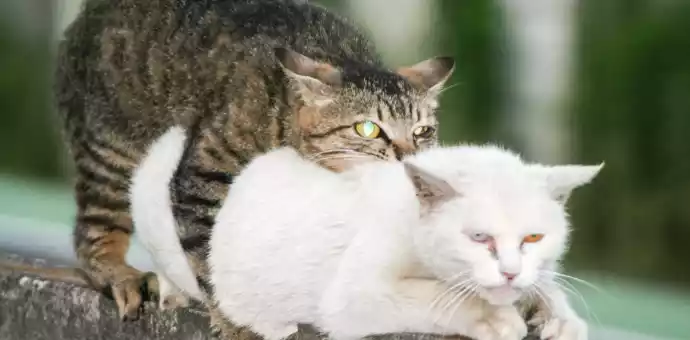
Signs of Estrus in Behavior and Physiology
Surprisingly, the behavior of a female cat changes during estrus. She becomes more friendly, wants attention, and may adopt a unique mating stance. Her vaginal region grows and gets more noticeable physiologically. Nature uses these cues to ensure effective reproduction and the transmission of genetic material.
Mating Season: Timing Is Everything
The mating season differs between domestic and wild cats. However, it frequently coincides with daylight duration and temperature change. Male cats become more active in their search for mates due to pheromones emitted by females. The synchronization of nature’s cues ensures the alignment of the reproductive cycle.
The Intricacies of Mating
Mating Rituals
Courtship is a fascinating ballet of actions in the world of cat mating. To attract females, male cats frequently engage in spraying and vocalizations. Female cats may react by rolling, elevating their hindquarters, or swatting at males. This sophisticated wooing dance assures that both spouses are open to pregnancy.
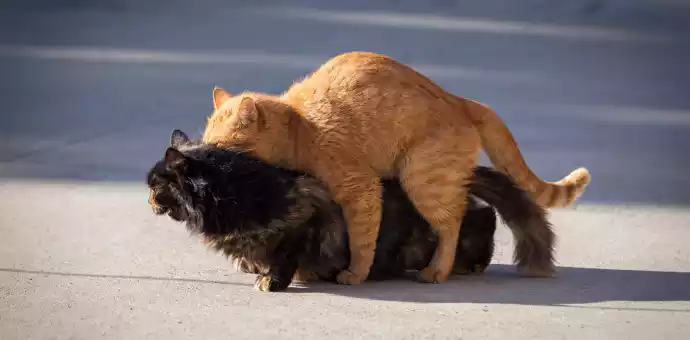
Female Cat Mating Positions: The Science Behind the Pose
Mating locations are not arbitrary; they have biological roots. The “lordosis” posture, in which a female arches her back and elevates her hips, aids in appropriate mating alignment. This biomechanical accuracy increases the likelihood of successful fertilization.
The Role of Ovulation in Successful Mating
More than physical touch is required for successful mating. In feline reproduction, the act of mating itself frequently induces ovulation. Unlike humans, whose ovulation occurs independently of copulation, cats have evolved to stimulate ovulation through mating. This one-of-a-kind adaption boosts the chances of conception.
Cat Mating Mysteries and Facts
The Symphony of Reproduction: Cat Mating Calls
Cats’ eerie howls and yowls during mating might be perplexing. These vocalizations serve various functions, ranging from wooing mates to communicating with possible competitors. These noises are part of the complicated communication web cats use to negotiate reproduction complications.
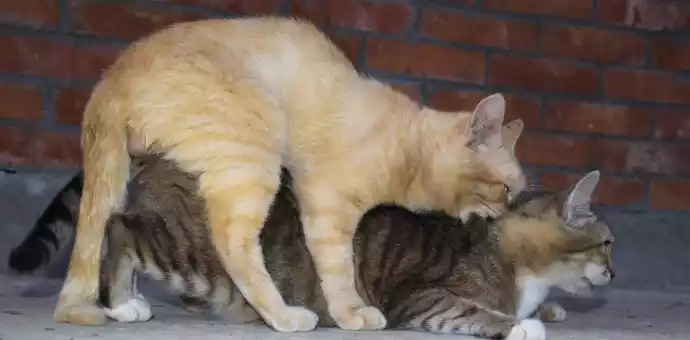
Unconventional Unions: Interactions Between Different Sizes
Big cats mating with little cats may seem unlikely, yet it’s not unheard of in the animal realm. While size discrepancies might be difficult, nature has a habit of surprising us. Such unions can result in unique combinations of features and attributes.
Unveiling Mating Behavior Oddities and Quirks
The world of cat mating is full of unusual behaviors. Every motion in the reproductive dance, from the seemingly violent biting during mating to the surprising rolling and tumbling, has a function. These actions demonstrate the intricate interaction between instinct and biology.
Mating Success and Pregnancy: The Journey Ahead
Following successful mating, detecting cat pregnancy is not as easy as a simple test. Changes in behavior, appetite, and even physical appearance can all give hints. The enigmatic gestation process begins, ushering in the next chapter of the feline adventure.
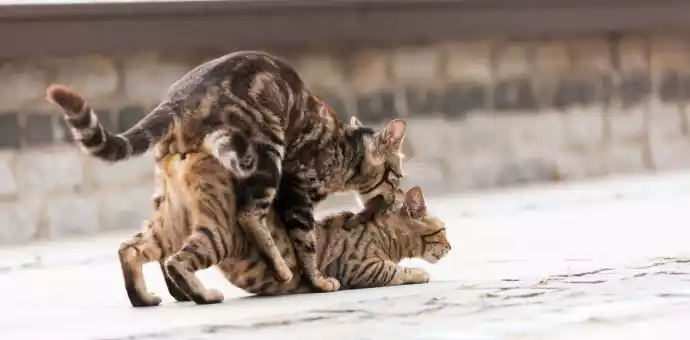
Did you know: these cat mating facts?
- Cats may acquire sexual maturity and get pregnant at four months (kittens can produce kittens!).
- Cats are seasonal breeders, meaning they only reproduce at specific times of the year. This usually starts in the spring as the days lengthen and ends in late autumn as the days shorten. This explains why cat litters are most common between April and September.
- Female cats, or ‘queens,’ will become more active and boisterous when they are ready to mate or ‘in heat!’ Typically, she will engage in many stroking, rolling, and attention-seeking behaviors. Her back would most likely arch downwards with her hindquarters lifted, a condition known as lordosis.
- Females can quickly be mated by several males, including relatives such as their father and brother.
- Mating between cats happens quickly, so it’s easy to be taken off guard!
- There are no established health or welfare benefits for cats to having a litter of kittens.
- Neutering has several health advantages, including significantly reducing the chance of contracting FIV (the cat form of HIV/AIDS).
The Conception Miracle
Nature’s Wonders of Conception and Pregnancy
The moment of conception is an amazing synthesis of biology and chance. The fertilization of an egg by a sperm signals the start of a new life. The merging of genetic material and developing a zygote, which will eventually evolve into a kitten, is a complex process.
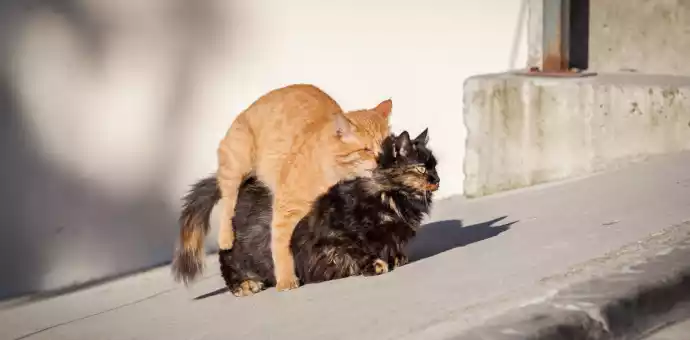
Gestation Period: Growing Life From Within
A cat’s pregnancy, known as gestation, lasts around 63 to 65 days. The growing embryos take on identifiable shapes during this phase, such as little paws and tails. The mother cat’s physique transforms to accommodate the developing life within her.
Intriguing Insights and Common Concerns
Decoding the Myths of Crying Before Mating
The myth that cats weep before mating has endured. However, it is only partially correct. While vocalizations are a component of the mating process, they are not distress calls. Instead, they’re a communication symphony, signifying readiness and coordinating actions among partners.
Mating Ease: Aligning with Instincts
Cats’ mating behavior reflects their inherent impulses. These impulses drive them to procreate, guaranteeing their species’ survival. While the procedure may appear difficult to humans, it flows naturally within the context of feline behavior.
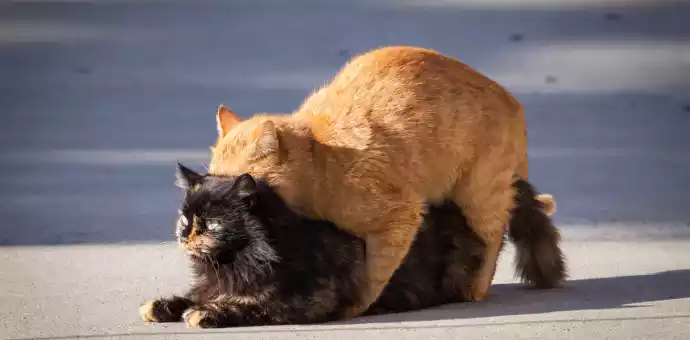
Conclusion
As we end our fascinating voyage into the fascinating world of cat mating, we’ve revealed a universe of behaviors, instincts, and wonders that drive the survival of the feline species.
Every aspect of this process, from the beautiful courting rituals to the intricacies of mating calls, emphasizes nature’s complex equilibrium.
As cat lovers, we are asked to examine and enjoy this world with fresh eyes, recognizing the unique tapestry that weaves the tale of feline existence.
FAQs
How long does cat mating take?
Do female cats want to mate?
Do cats mate easily?
How do cats mate?
Why do cats scream when mating?
At what age do male cats mate?
How do I know if my male cat is in heat?
Do cats cry before mating?
Dog and cat mating?
“Be Petspaa, Do PetsPaa”
Read More:
Cat Names in Hindi: Traditional & Modern
Can Cats Eat Pretzels? Safety Tips
Can Cats See Color? Understanding Cat Vision & Colors
Can Cats Eat Crab? Exploring Feline Cravings & Safety
Can Cats Eat Cheese? You Need to Know First

